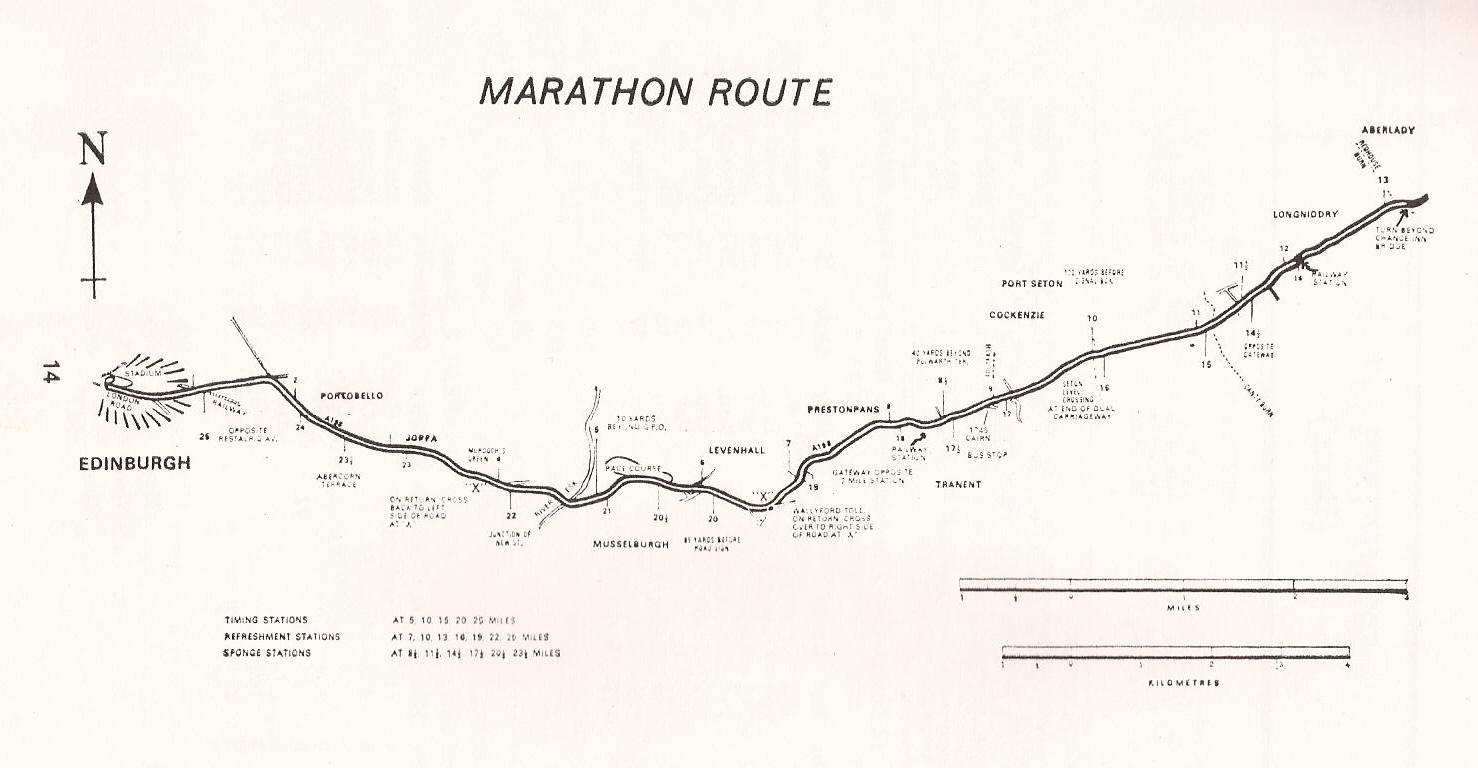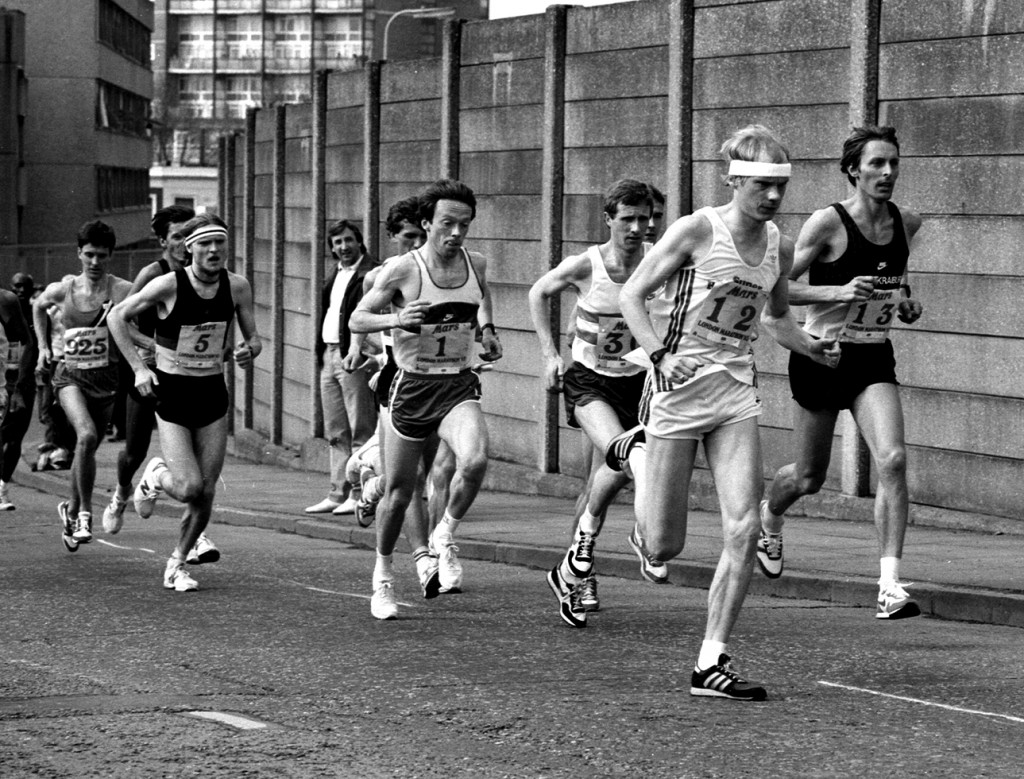Money matters. In the mid 1990’s as group coach for endurance (800 – marathon, including race walking) I had an allowance of £120 per year which could only be claimed in two lots of £60 with receipts where applicable. Weekend courses or conferences such as the BMC weekend at Jordanhill in 1986 had to be self financing. With guests including Peter Coe, Jimmy Hedley, Frank Horwill and Sean Kyle whose expenses had to be paid, I sought sponsorship and still had to charge the exactly 100 who attended for the privilege. When we took parties on warm weather training weeks in Portugal, the athletes had to pay their own way, and if an outstanding young athlete (eg AAA’s champion) wanted/needed to do altitude training then he had to find the money on his own. This involved all sorts of ploys – such as asking Eddie Kulukundis in London for a contribution. Money matters. The shortage of money was a national one.
In racing terms, the runners had to have financial backing of their own, eg Tom McKean and Yvonne Murray had support from Glen Henderson thanks to the efforts of their coach, to access the support team they required and to get to the races. In the search for good races time from employment had to be found, as well as the finance, to travel around Britain for the top races. Needless to say, for the rest of the running community for whom this was out of the question, their entire racing season had to be organised inside Scotland. Recognised by everybody, this meant that the domestic season had to be arranged to develop all athletes through a system graded in terms of severity of competition and, in the case of marathon runners, in terms of distances raced. The situation has been documented and it needed to be changed. With no fewer than seven different governing bodies and money in short supply, it was necessary to reduce the management costs and go about raising money in a commercial way.
There was no problem with the structure of the sport at this point: it had not come about by accident and was for the benefit of athletes of all levels in the country. That it was a deliberate act by the SCCU is evidenced by Colin Shields in his official history of the SCCU where he says on page 164:
“There was a reorganisation of relay fixtures in season 1978/79 to give a logical start to the winter season. Since the introduction of the National Relay championships four years earlier it had been after the Edinburgh to Glasgow relay at the end of November This resulted in a mixture of road and cross country relays over varying distances. The Union rearranged the fixture list such that the season opened with County, District and national four by two and a half miles cross country relay championships on successive weeks in October as a start to the winter season and a lead in to the longer distance races later in the season”.
This was already true of the other championships – the National had always been the last race in the winter and the District Championships were a month or so befre them. The County Championships were invariably before that and in the east of the country, the East District League was held on the same day as the Counties Championships. It was a structure that worked for all involved in Scottish endurance running. How and why did it change?
Committees were set up, meetings held, consultations made and the required alterations were made. This led to the dismantling of the whole structure of the sport in the mid 1990’s with the seven different governing bodies being merged under the new SAL Banner. There was as part of the re-organisation access to money via Sport Scotland and, according to one of the group coaches active before and after the reorganization many new possibilities were now available to them. It was possible to have a training weekend with the cost wholly covered, it was possible to take groups to warm weather training, and in some cases even altitude training. Support systems were set up and quick access was now available in a way not always possible before. The changes also affected racing possibilities for the top athletes who could now be financed, in whole or in part, to have a graded international racing programme.
***
But everything has a cost – including money. I remember being at a meeting in Bridge of Allan where Meg Ritchie suggested that Scottish athletics might, in future, have to be split into the elite international athletes and their provision and the domestic version of the sport. There is a good argument to be had on this topic but it has never been openly discussed in detail with the consequences for all runners and clubs thought through.
Most, if not all, of the money from Sport Scotland seems to be attached to medals won in major Games and other high profile international events, and to the athletes who will (it is hoped) deliver them. The names are easily found on many internet sites and we hear regularly of the comprehensive backup, the support provided, the altitude training camps and so on which provide for our top talent. It was necessary if the country has to compete at the top level, and it seems to be working – and working well.
However the competition needs of the elite cannot simply be met by the situation domestically. That is a given. But one of the babies has been thrown out with the bath water and that is the provision for the club standard and slightly above athlete. There is now in 2020 no obvious governing body provided ladder for these athletes to progress or to achieve their best. How do we do that?

